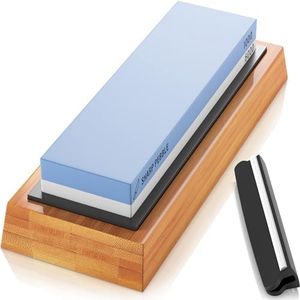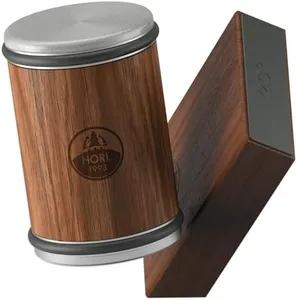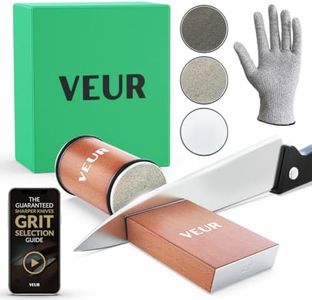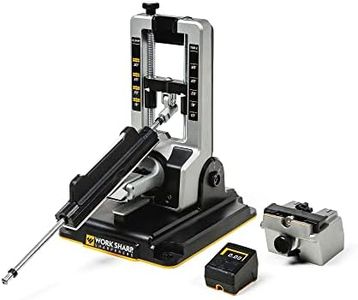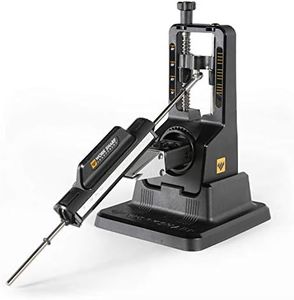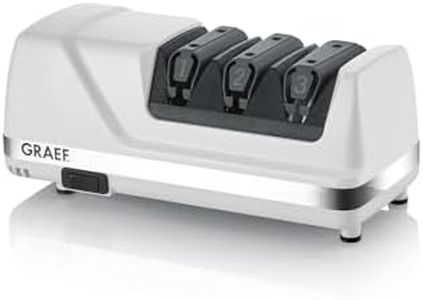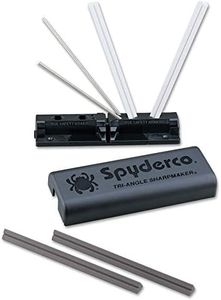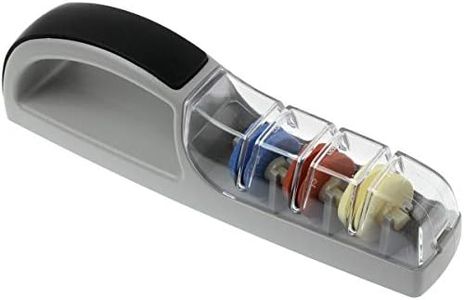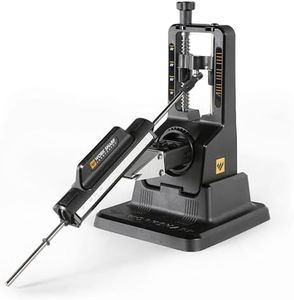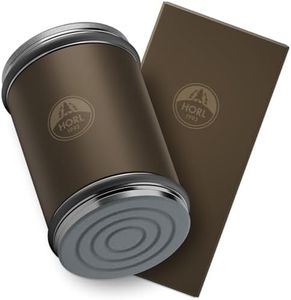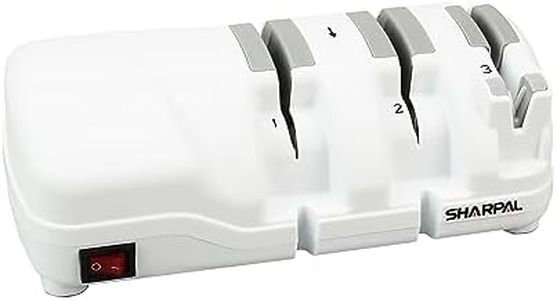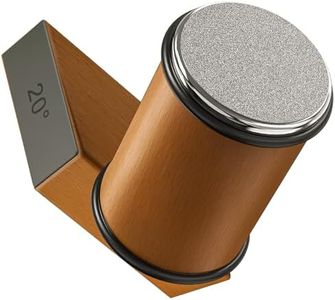We Use CookiesWe use cookies to enhance the security, performance,
functionality and for analytical and promotional activities. By continuing to browse this site you
are agreeing to our privacy policy
10 Best Knife Sharpeners
From leading brands and best sellers available on the web.Buying Guide for the Best Knife Sharpeners
Choosing the right knife sharpener is an essential step in maintaining your kitchen knives and ensuring they perform safely and effectively. With a wide variety of sharpeners available, it’s important to consider how often you cook, the types of knives you own, and how involved you want to be in the sharpening process. Understanding the main features and differences between sharpeners will help you find the option that best matches your needs and comfort level.Type of SharpenerKnife sharpeners come in several main types: manual pull-through sharpeners, electric sharpeners, whetstones (or sharpening stones), and honing rods. Manual sharpeners are user-friendly and quick, requiring you to simply pull the knife through. Electric sharpeners automate the process and are great for frequent sharpeners who want to save time. Whetstones offer the most control and can give the sharpest edge, but require practice and patience. Honing rods mainly keep an edge aligned between sharpenings but don’t sharpen a dull blade. Pick a type that matches how comfortable you are with hands-on sharpening, how precise you want to be, and how often you’re willing to spend time maintaining your knives.
Grit LevelThe grit level refers to how coarse or fine the sharpening material is. Lower numbers (such as 200–400) represent coarse grit for reshaping dull or damaged edges, while higher numbers (1000–6000) are finer and used for refining and polishing. Combination sharpeners or stones offer both options. If your knives are often very dull, you'll want access to coarser grits; for regular upkeep and finishing, finer grits become more important. For most household needs, a mid-range grit suffices, but if you want to give special care to high-quality knives or perform repair work, consider models that offer multiple grit levels.
Angle GuidesSome sharpeners come with built-in angle guides, which help you maintain a consistent sharpening angle. This is especially useful for beginners or anyone unfamiliar with maintaining the correct edge. Sharpeners without guides demand more skill but offer flexibility for customizing the edge. If you want a hassle-free experience and are worried about damaging your knives, look for sharpeners with clear angle guides. If you have specialty knives or want to experiment with different angles, a guide-less or adjustable-angle option is ideal.
Safety FeaturesSafety is crucial when handling knives and sharpeners. Some sharpeners provide protective hand grips, non-slip bases, or finger guards to help prevent accidents. These features are especially important for beginners or if you plan to use the sharpener in a busy kitchen environment. If you prioritize ease and safety, choose a model with robust safety enhancements.
Ease of Use and MaintenanceEase of use covers how intuitive and straightforward the sharpener is. Manual and electric sharpeners are typically easier for beginners, while stones require learning a specific technique. Some sharpeners are easier to clean or store than others; for example, stones may need regular flattening and drying, while electric sharpeners just need to be wiped down. Think about how much time you want to spend sharpening and maintaining the sharpener itself. Simpler options are better for occasional use, while those who enjoy the process may prefer a more hands-on tool.
